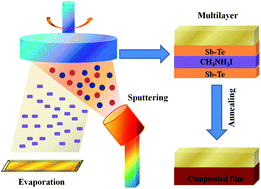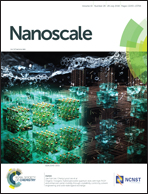High-performance p-type inorganic–organic hybrid thermoelectric thin films
Abstract
The performance of organic–inorganic hybrid thermoelectric thin films can be dramatically enhanced by optimizing energy filtering and carrier transport states at the organic–inorganic interfaces. In this work, p-type “Sb2Te3/CH3NH3I/Sb2Te3” multilayer thin films were firstly fabricated with varied contents of CH3NH3I, and then an annealing process was used in order to form homogeneous organic–inorganic hybrid thin films. The results revealed that the introduced organic component can promote thin film growth and develop a dense nanostructure with improved crystallinity, thus resulting in a significantly increased Seebeck coefficient and a reduced thermal conductivity as a result of the optimized electronic transport characteristics and enhanced effects of phonon scattering. As is expected, the thermoelectric performance of the hybrid-nanocomposite films is enhanced, achieving the maximum ZT value of 1.55 at a temperature of 413 K, which is several times higher than that of the as-fabricated film, thereby suggesting that the proposed strategy can be applied as an efficient method for the preparation of high-performance thermoelectric thin films.



 Please wait while we load your content...
Please wait while we load your content...